Journal of Electromagnetic Analysis and Applications
Vol.4 No.4(2012), Article ID:18617,5 pages DOI:10.4236/jemaa.2012.44023
Tunnel Diode Loaded Microstrip Antenna with Parasitic Elements
![]()
1Department of Electronics and Communication Engineering, Raffles University, Neemrana, India; 2Department of Physics, Galgotias University, Greater Noida, India.
Email: srakeshnath@gmail.com
Received January 20th, 2012; revised February 16th, 2012; accepted March 15th, 2012
Keywords: Microstrip Antenna; Symmetrically Tunnel Diode Loaded Patch and Parasitic Patch
ABSTRACT
The present work describes the circuit model based analysis of symmetrically tunnel diode loaded microstrip antenna with parasitic elements. To optimize the antenna characteristics, a systematic study has been carried out as a function of tunnel diode bias voltage, space between parasitic patch and fed patch. The results obtained from antenna radiation pattern depict that an improvement of 5.8 MHz in bandwidth can be achieved if the symmetrically tunnel diode is loaded with patch along with parasitic elements of gap (s) = 3.6 cm. It has also been noted that at this state the radiations are more powerful i.e. 0.5647 dB as compared to single patch design.
1. Introduction
Microstrip patch antennas have attracted widespread interest due to their small size, light weight, low profile and low cost as well as to the fact that they are easy to manufacture, suitable to planar and non planar surfaces, mechanically robust, easily integrated with circuits but their narrow bandwidth and low gain make these antennas for limited use [1,2]. In the multi-channel application a small instantaneous bandwidth is required over a large frequency range. A tunable microstrip antenna provides an alternative to wideband operation in which an antenna with small bandwidth is tuned over a large frequency band [3]. Active device loaded patch is widely used to make a tunable antenna [4]. Several researchers have used parasitic elements along the radiating and nonradiating edges of the fed patch to achieve additional gain [5].
In the present paper the radiation characteristics and resonance behavior of the symmetrically tunnel diode loaded microstrip antenna with parasitic elements at radiating edges has been studied by using circuit model approach for the first time. Consequently various antenna parameters such as input impedance, VSWR, return losses etc. are evaluated as a function of frequency for different bias voltages. The effect of separation (s) between the patch and parasitic elements is also investigated for different bias voltages.
2. Antenna Geometry and Its Equivalent Circuit
Tunnel diode loaded microstrip antenna is shown in Figure 1, in which rectangular microstrip antenna (RMSA) is considered as a parallel combination of R, L and C.
The value of which are given as [6]
 (1)
(1)
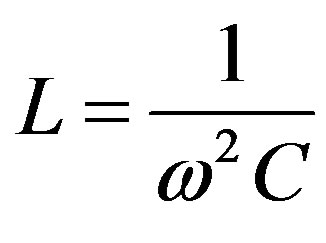 (2)
(2)
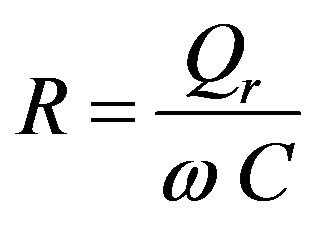 (3)
(3)
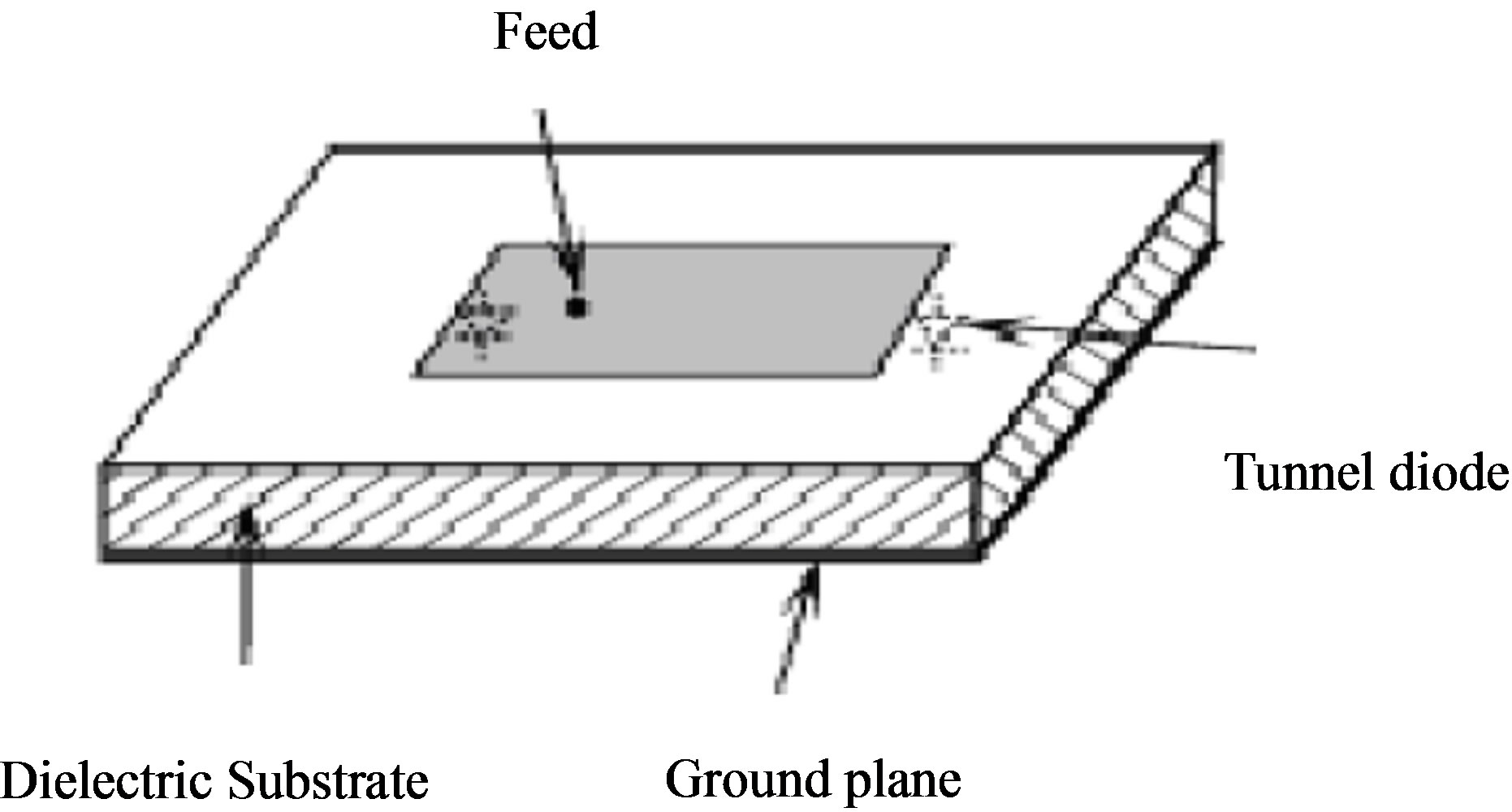
Figure 1. Symmetrically tunnel diode loaded rectangular microstrip antenna (RMSA).
where
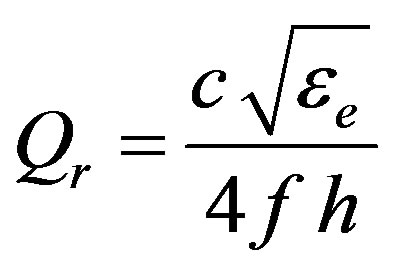
here,  is effective permittivity of the medium which is given by [6].
is effective permittivity of the medium which is given by [6].
 (4)
(4)
where c is the velocity of light, f is the design frequency,  is the relative permittivity of the substrate material,
is the relative permittivity of the substrate material,  and W are length and width of the rectangular patch and h is thickness of the substrate material. yo is Y-coordinate of the feed point. The equivalent circuit of the tunnel diode is shown in Figure 2, in which Rs is resistance, Ls is inductance, –RD is negative resistance and CD is the junction capacitance [7].
and W are length and width of the rectangular patch and h is thickness of the substrate material. yo is Y-coordinate of the feed point. The equivalent circuit of the tunnel diode is shown in Figure 2, in which Rs is resistance, Ls is inductance, –RD is negative resistance and CD is the junction capacitance [7].
The junction capacitance CD is given as
 (5)
(5)
The impedance of symmetrically tunnel loaded patch can be given as in Figure 3.
2.1. Symmetrically Tunnel Diode Loaded Patch with Parasitic Elements
Figure 4(a) shows two parasitic elements placed at the radiating edges of the RMSA with separation (s) and width W. The equivalent circuit of parasitic elements is shown in Figure 4(b). It may be mentioned that such circuit can be analyses using odd and even mode concept

Figure 2. Equivalent circuit of tunnel diode.

Figure 3. Equivalent circuit of symmetrically tunnel integrated RMSA.
and hence equivalent circuit of the odd and even mode can be written as shown in Figures 4(c) and (d) respectively.
Now the combined equivalent circuit of tunnel loaded patch with parasitic elements can be given as shown in Figures 5(a) and (b) for odd and even mode cases.
2.2. Operating Frequency
The operating frequency range of the tunnel diode oscillator controlled by self resonance frequency 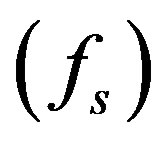
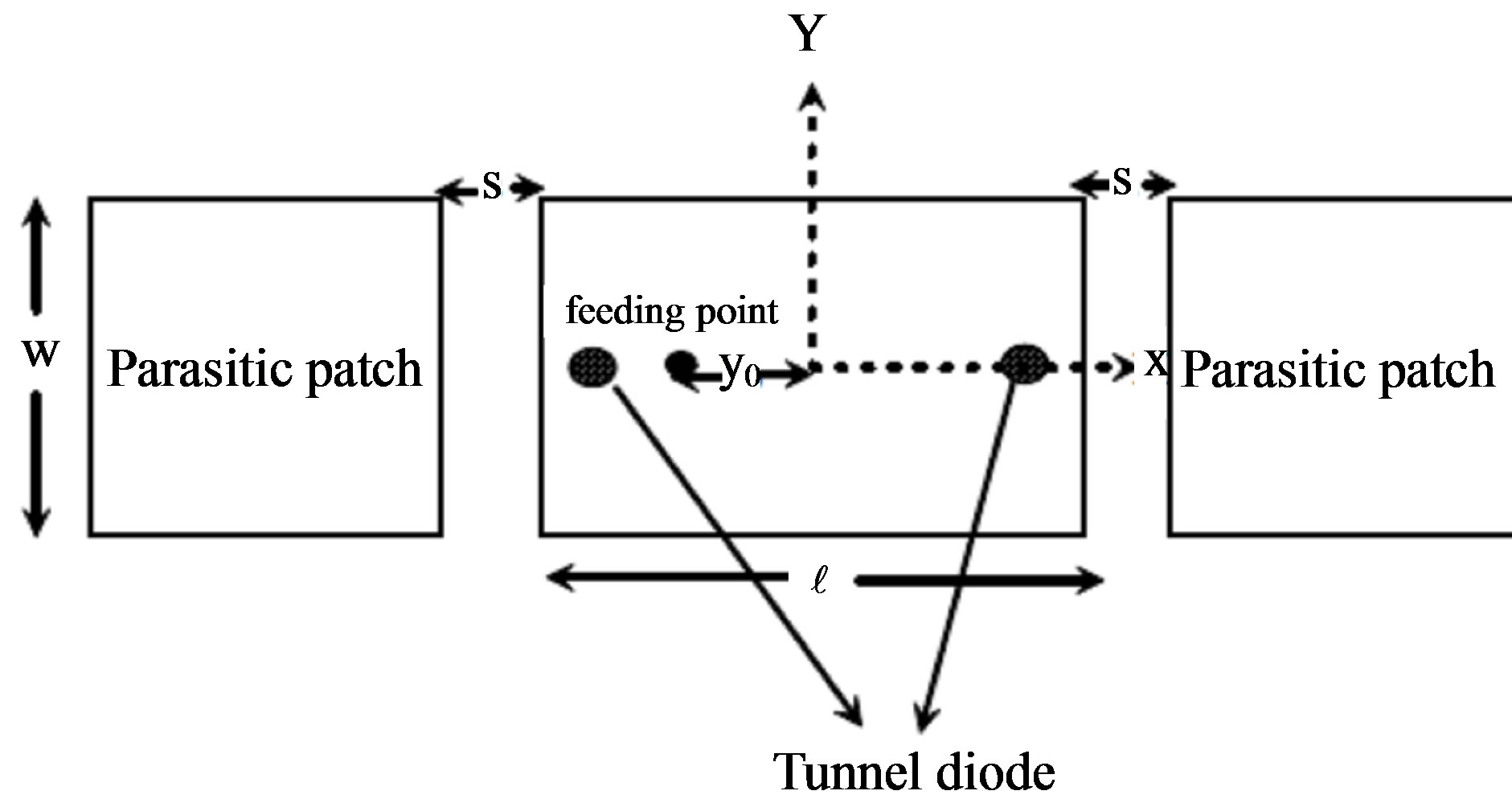 (a)
(a) (b)
(b)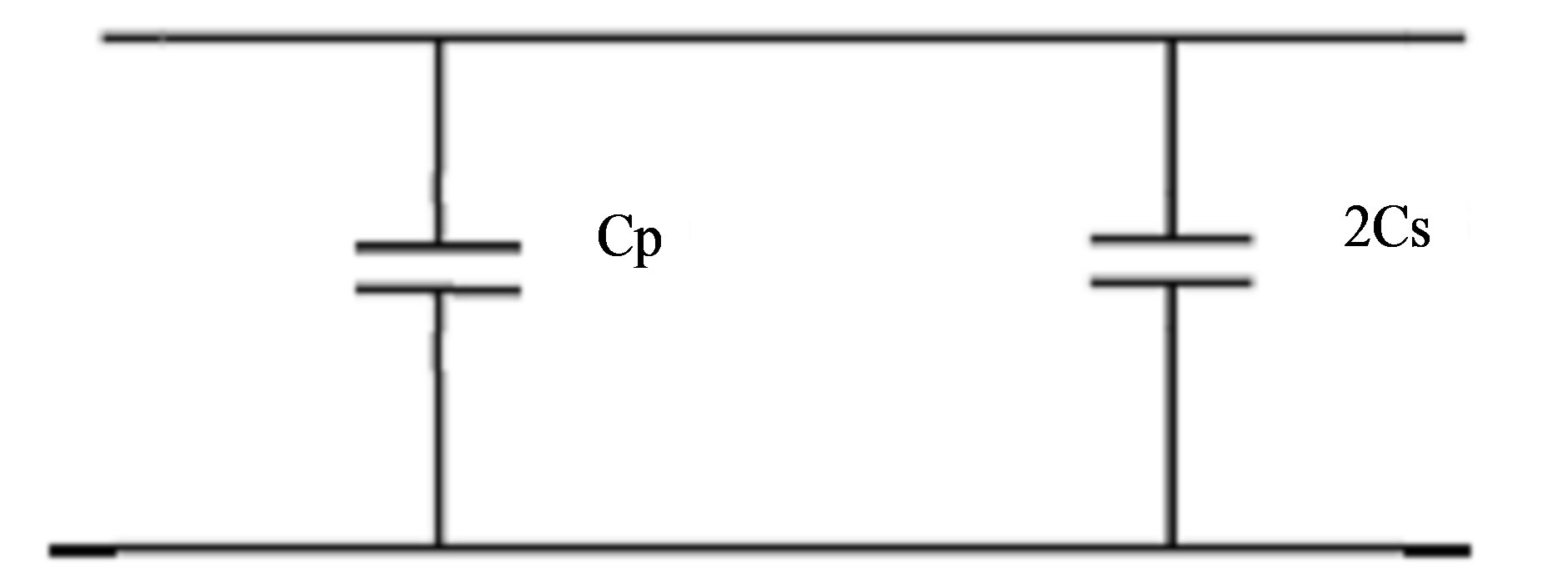 (c)
(c)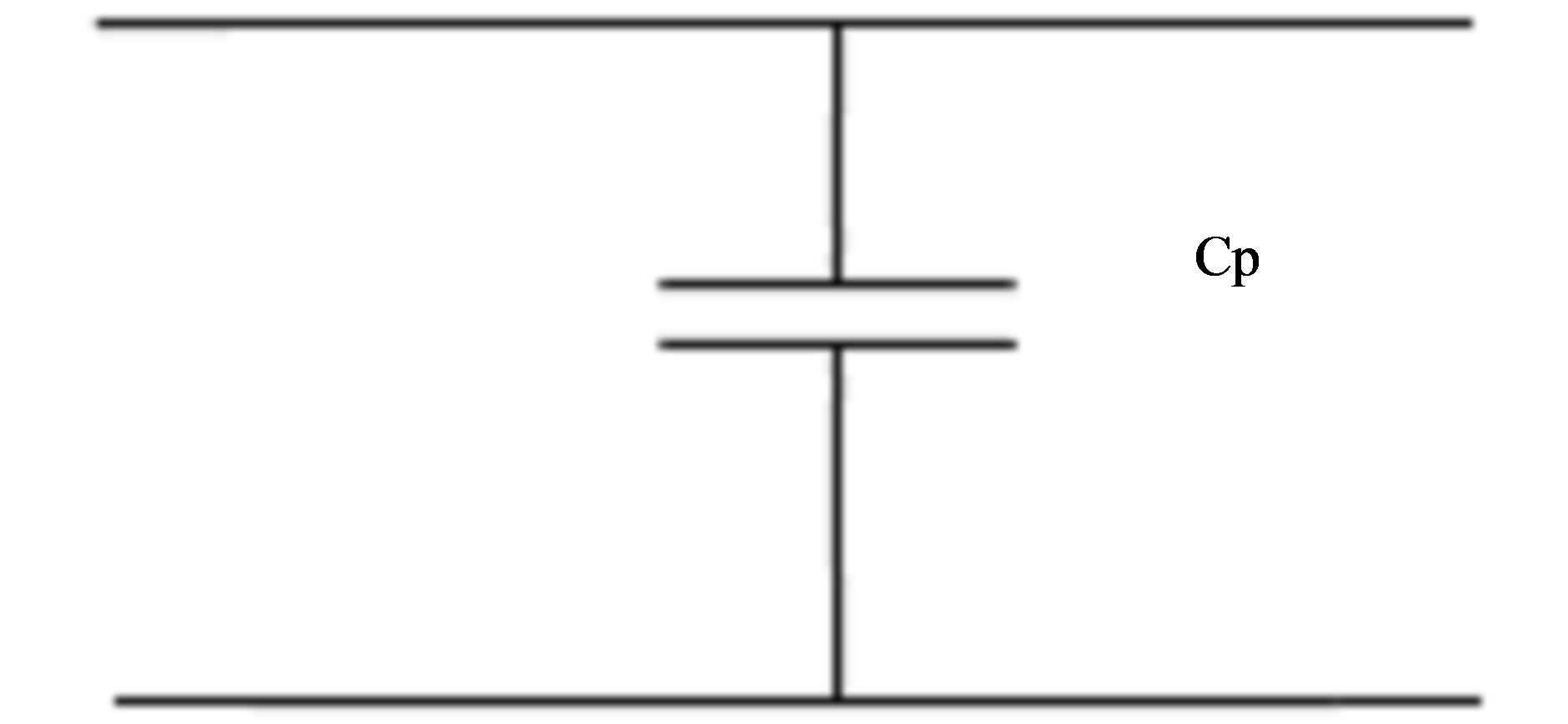 (d)
(d)
Figure 4. (a) Symmetrically tunnel loaded RMSA with coplanar parasitic elements; (b) Equivalent circuit of gap coupled lines; (c) Odd mode; (d) Even mode.
 (a)
(a) (b)
(b)
Figure 5. (a) Odd mode; (b) Even mode. Equivalent circuit of symmetrically tunnel loaded RMSA with parasitic elements.
and resistive cut off frequency  whose values are given by [8].
whose values are given by [8].
 (6)
(6)
 (7)
(7)
When the negative resistance of the tunnel diode goes to zero then the oscillation ceases to exist. Thus the resistive cut off frequency indicates that operating frequency should be less than fr. The equivalent circuit of symmetrically tunnel loaded RMSA can be given as shown in Figure 3. The condition for oscillation of tunnel loaded patch is [7]
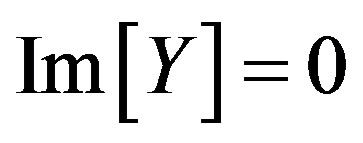 (8)
(8)
where Y is the admittance of the circuit as seen by the negative resistance –RD. From Figure 3, we can evaluate imaginary part of admittance as Equation (9)
where







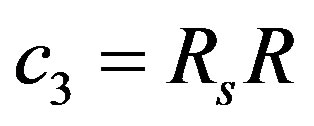


Now the combined equivalent circuit of tunnel loaded patch with parasitic elements can be given as shown in Figures 5(a) and (b) for odd and even mode cases. From Figure 3, the impedance of symmetrically tunnel loaded patch can be given as
 (9)
(9)
 (10)
(10)
where

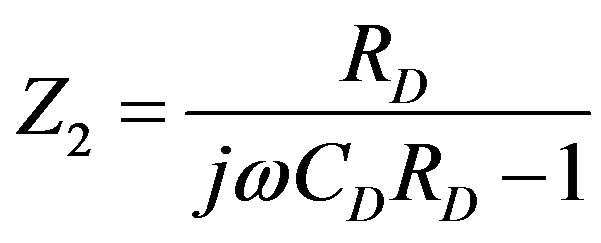

From Figure 5, the equivalent circuit for tunnel loaded patch with parasitic elements can be used to calculate odd and even mode impedances. The odd mode capacitance 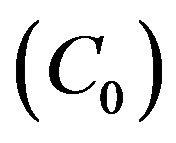 and even mode capacitance
and even mode capacitance 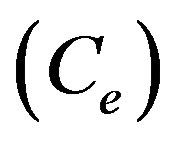 can be given as [8].
can be given as [8].
 (11)
(11)
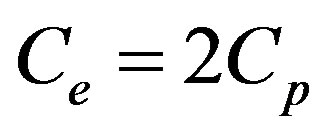 (12)
(12)
From Figure 5, the impedances for odd and even mode can be given as
 (13)
(13)
and
 (14)
(14)
where  and
and 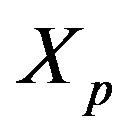 are capacitive impedances of gap and parasitic elements.
are capacitive impedances of gap and parasitic elements.
Total input impedance of the symmetrically tunnel loaded RMSA with parasitic elements is given by
 (15)
(15)
The different antenna parameters can be calculated as Reflection coefficient
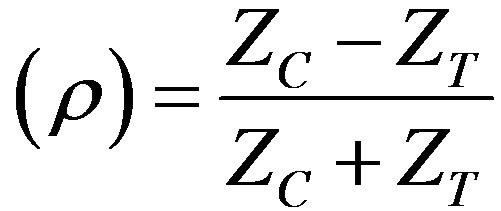 (16)
(16)
where 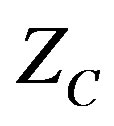 is the characteristic impedance of the coaxial feed (50 Ω).
is the characteristic impedance of the coaxial feed (50 Ω).
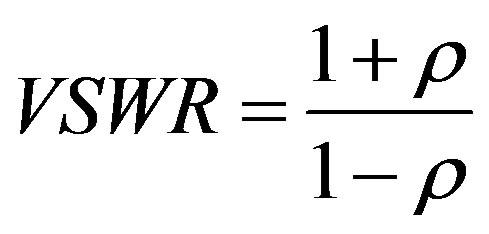 (17)
(17)
 (18)
(18)
The radiation pattern for tunnel loaded RMSA with parasitic elements can be calculated as
 (19)
(19)
 (20)
(20)
where AF is array factor and given by [10].
2.3. Design Specifications for Microstrip Patch Antenna
The designed frequency of the rectangular patch antenna is 1 GHz. The dimension of the rectangular patch is calculated by [6]. The detail design specifications are given in Table 1 and Table 2.
3. Result and Discussion
Variation of return loss for single patch, tunnel diode

Table 1. Design specifications for the tunnel diode.

Table 2. Design specifications for microstrip patch antenna.
loaded patch and tunnel loaded patch with parasitic elements are shown in Figure 6, for different values of bias voltages. It is observed that the resonance occurs for tunnel loaded patch at lower value as compared to single patch and it is still lower for parasitic loaded patch for all the values of bias voltage.
From Figure 7, it is also observed that the bandwidth of the patch improves by loading the patch with tunnel diodes. However, by loading the tunnel loaded patch with parasitic elements the bandwidth further improves as compared to patch. Typically it may be noted that maximum bandwidth is achieved for tunnel loaded patch with parasitic element having s = 3.6 cm. When the value of (s) increases bandwidth decreases. At s = 9.9 cm, the antenna behaves as a tunnel loaded patch and the effect of parasitic elements ceases to exist. This is because of the fact that when (s) is more than 9.6 cm. there is no coupling between patch and parasitic elements. Variation of resonance frequency with bias voltage is shown in Figure 8. It is found that the resonance frequency increases minutely with bias voltage. The result is in good
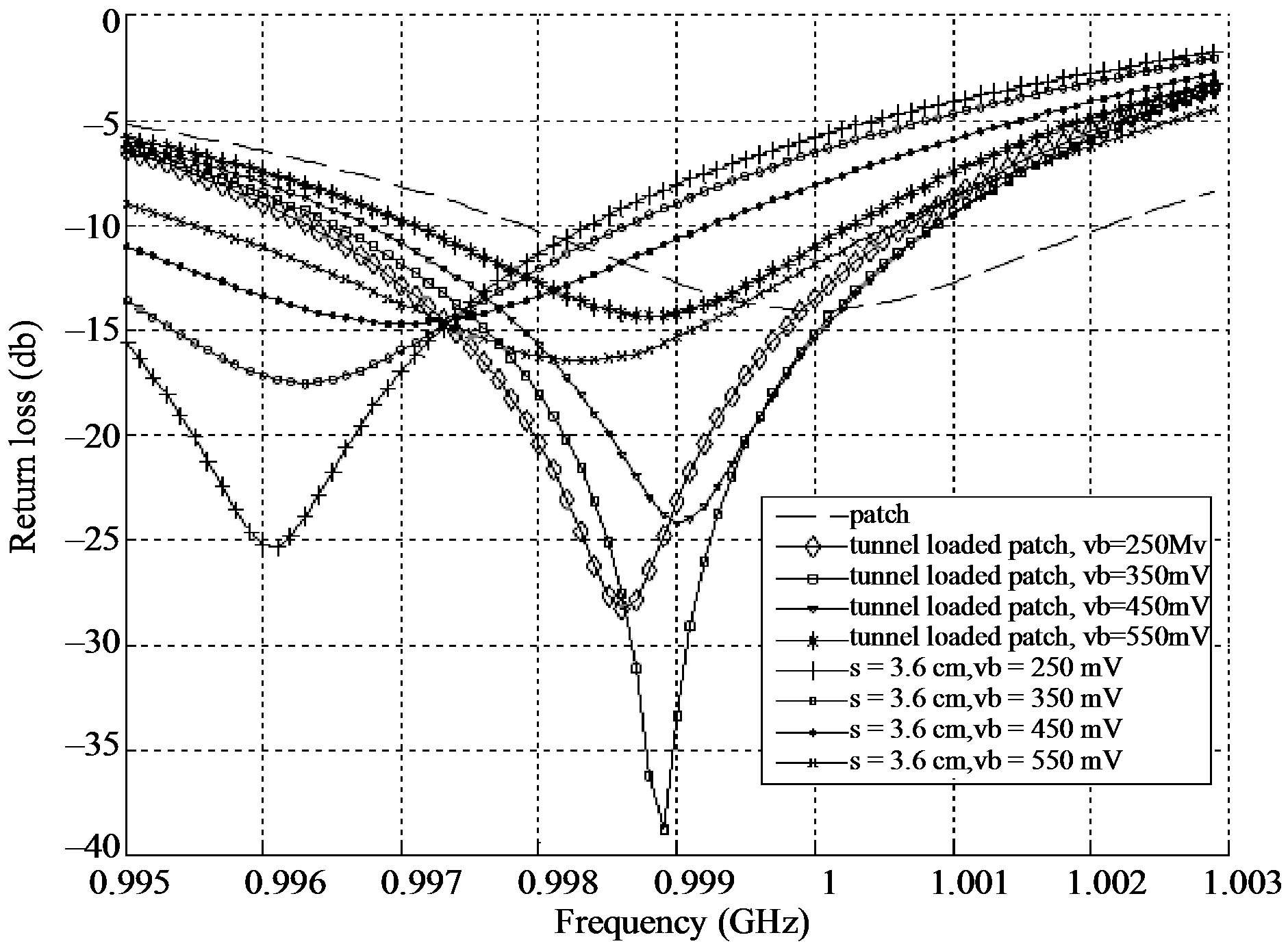
Figure 6. Variation of return loss with frequency for different bias voltage.
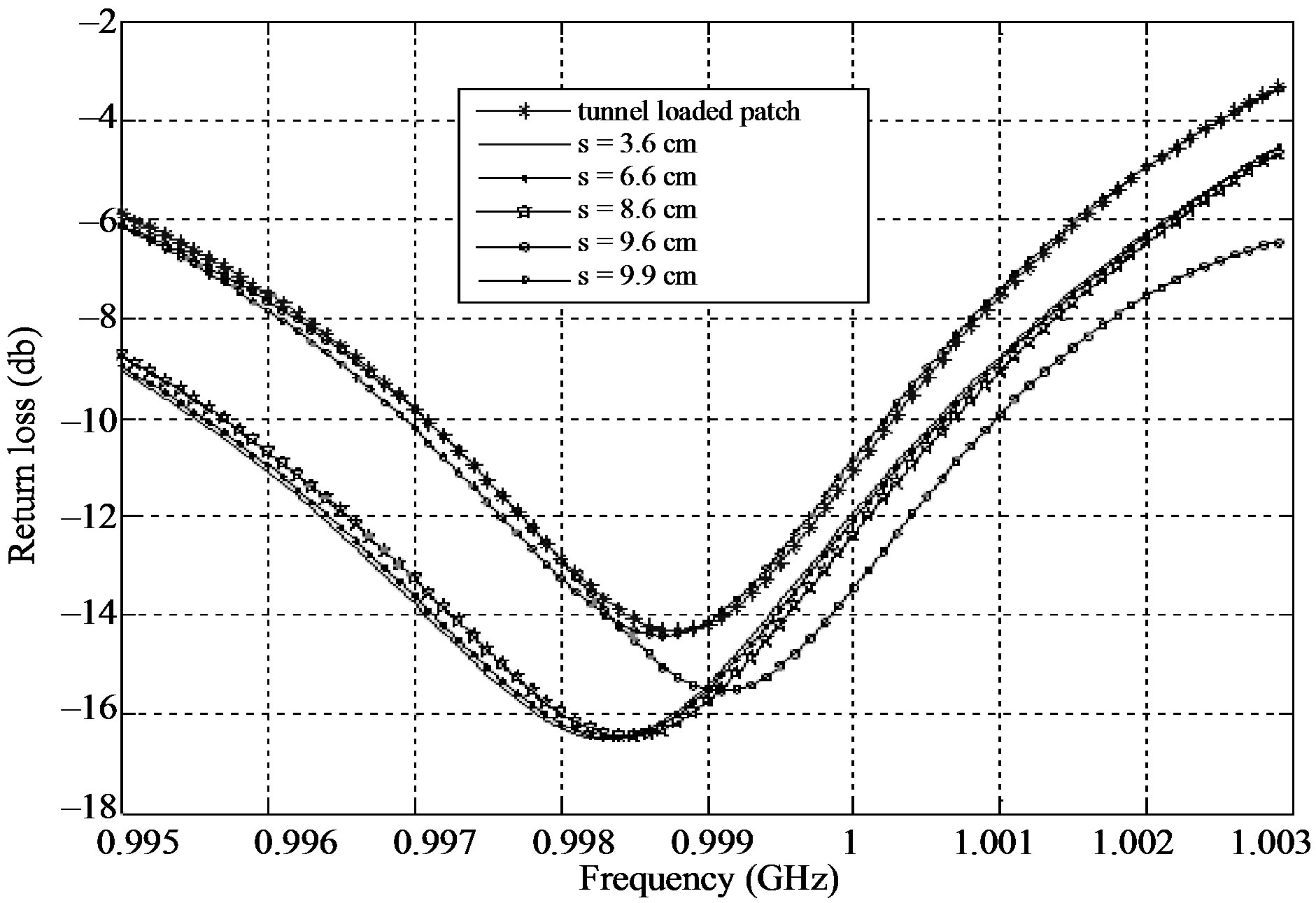
Figure 7. Variation of return loss with frequency for different value of gap (s) for given bias voltage Vb = 550 mV.
agreement with the reported data [10]. The radiation pattern of the antenna is shown in Figure 9. It is observed that tunnel loaded patch with parasitic elements for (s) = 3.6 cm shows maximum radiated power which is 0.5647 dB higher as compared to patch alone. It is further noted that the radiation pattern is invariant with the bias voltage.
4. Conclusion
It is concluded from the above analysis that the bandwidth of the tunnel loaded patch antenna with parasitic
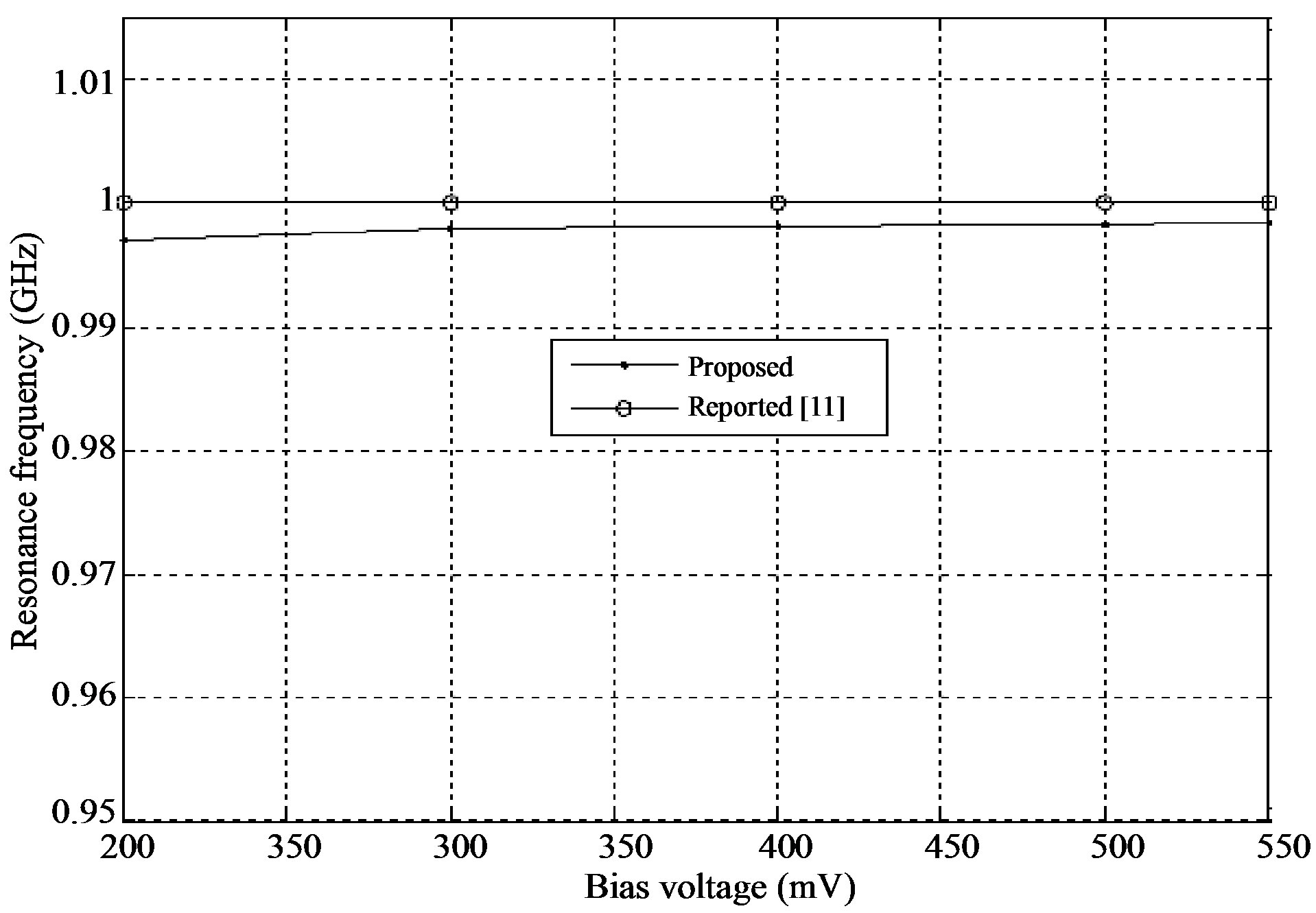
Figure 8. Variation of resonance frequency with bias voltage.

Figure 9. Radiation pattern of the tunnel diode loaded patch antenna with parasitic elements.
elements is improved and it is found maximum for the patch size (s) = 3.6 cm. Further, an increase in gap (s) (beyond s = 9.9 cm) reduces the bandwidth. It means the effect of tunnel loaded patch and the parasitic elements ceases to exist or at this state the effective mutual interaction between patch and parasitic elements is stopped. In this way the performance of tunnel diode loaded microstrip antenna can be enhanced by using parasitic elements of optimum gap (s).
REFERENCES
- K. R. Carver and J. W. Mink, “Microstrip Antenna Technology,” IEEE Transactions on Antennas and Propagation, Vol. 29, No. 1, 1981, pp. 2-24. doi:10.1109/TAP.1981.1142523
- D. M. Pozar, “An Update on Microstrip Antenna Theory and Design Including Some Novel Feeding Techniques,” IEEE Antennas and Propagation Society Newsletter, Vol. 28, No. 5, 1986, pp. 4-9.
- J. A. Ansari, R. B. Ram, S. K. Dubey and P. Singh, “A Frequency Agile Stacked Annular Ring Microstrip Antenna Using Gunn Diode,” Smart Materials and Structures, Vol. 16, No. 6, 2007, pp. 2040-2045. doi:10.1088/0964-1726/16/6/006
- P. Bhartia and I. J. Bahal, “Frequency Agile Microstrip Antennas,” Microwave Journal, Vol. 25, No. 10, 1982, pp. 67-70.
- G. Kumar and K. C. Gupta, “Broad-Band Microstrip Antennas Using Additional Resonators Gap-Coupled to the Radiating Edges,” IEEE Transactions on Antennas and Propagation, Vol. 32, No. 12, 1984, pp. 1375-1379. doi:10.1109/TAP.1984.1143264
- I. J. Bahl and P. Bhartia, “Microstrip Antennas,” Artech House, Dedham, 1981.
- W. F. Woo and. F. Chow, “Principles of Tunnel Diode Circuits,” Wiley, New York, 1969.
- S. P. Sylvesten and P. Gentile, “Basic Tunnel Theory and Application of Tunnel Diode,” D. Van Nostrand, Princeton, 1962.
- R. Garg and I. J. Bahal, “Microstrip Discounties,” International Journal of Electronics, Vol. 45, No. 12, 1978, pp. 81-87. doi:10.1080/00207217808900883
- S. P. Gentile, “Basic Theory and Applications of Tunnel Diode,” D. Van Nostrand, Princeton, 1964.

